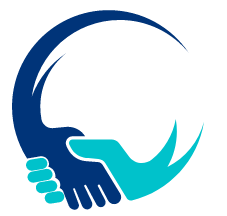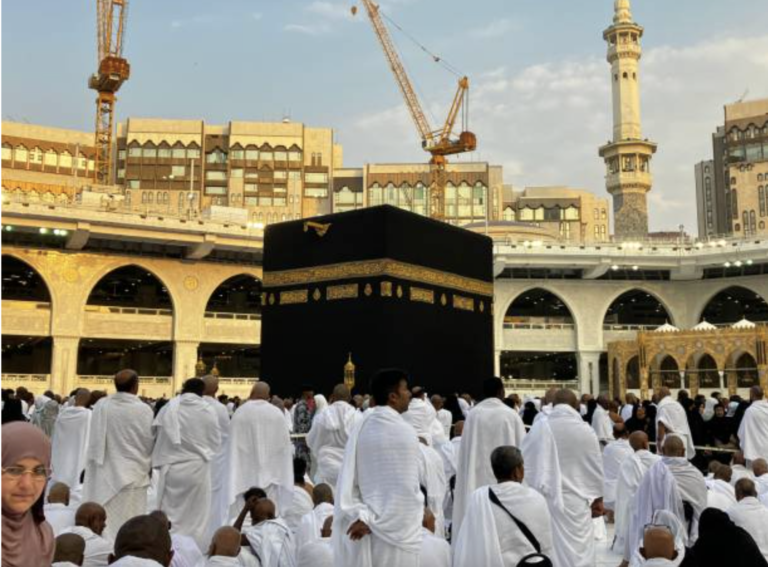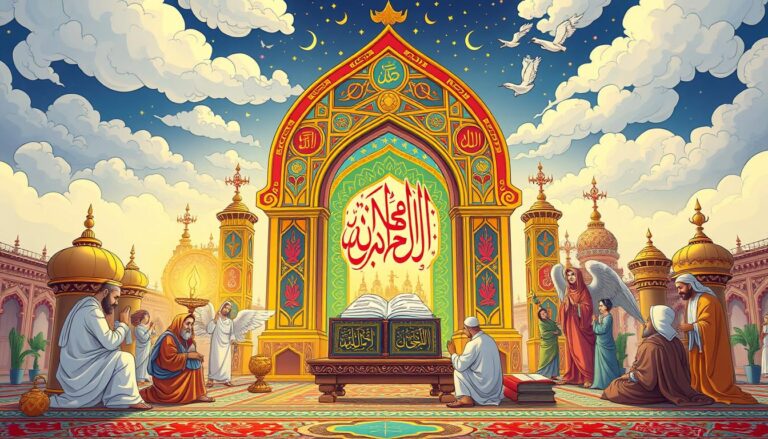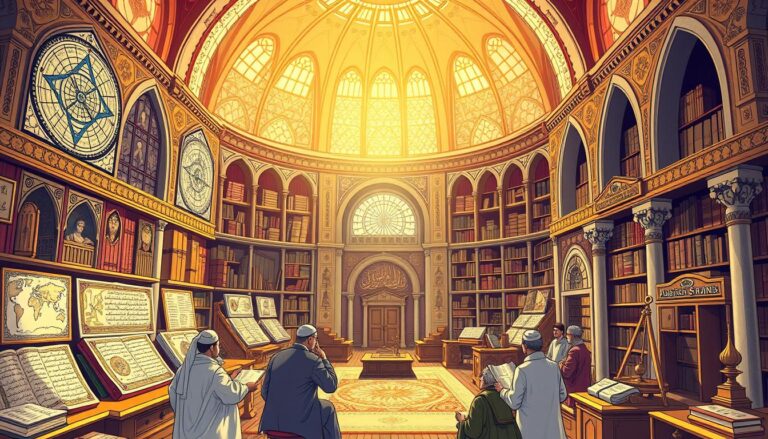5 Remarkable Islamic Empires That Shaped History
Did you know that some of the world’s most influential empires came from Arabia? The Islamic Golden Age lasted nearly six centuries. During this time, Muslim dynasties changed history forever. They started with Arab conquests and helped create the Islamic civilization we know today.
After Prophet Muhammad’s death in 632 CE, powerful Islamic states began to rise. They expanded far beyond Arabia. These empires didn’t just conquer; they also built centers of learning, art, and science. The Rashidun Caliphate started this era of growth, paving the way for the Umayyad and Abbasid Caliphates.
Did you know the Abbasid and Umayyad Caliphates covered 11.1 million square kilometers? That’s bigger than the United States! Their vast lands, from Spain to China, encouraged cultural exchange and growth.
Key Takeaways
- Islamic empires emerged after Prophet Muhammad’s death in 632 CE
- The Rashidun Caliphate marked the beginning of Islamic expansion
- Umayyad and Abbasid Caliphates each covered 11.1 million square kilometers
- These empires fostered significant cultural and intellectual advancements
- The Islamic Golden Age lasted from the mid-7th to mid-13th century
The Rise of Islamic Empires
The spread of Islam was a major turning point in history. After Muhammad’s death in 632 CE, Muslim leaders started a series of conquests. These conquests built vast Islamic empires.
This rapid growth changed the Middle East, North Africa, and more. It reshaped politics and culture.
The Spread of Islam
Islam grew fast. By 2016, there were 1.7 billion Muslims, making it the second-largest and fastest-growing religion. The early caliphs expanded Islam to the Indian, Atlantic, and Pacific Oceans.
Early Conquests and Expansion
The Umayyad Caliphate made big gains. Despite starting with few Muslims, conversions grew. Trade helped spread Islam, especially in Indonesia.
Arab conquests took Palestine, Syria, and Egypt by 642. This was a big step for Islam.
Foundations of Islamic Governance
Islamic civilization created cultural and scientific centers. The caliphate system introduced a new way of ruling. Non-Arabs could convert to Islam around 700 CE.
This move helped solve Muslim army shortages. It made Islamic society diverse and dynamic.
“1001 Inventions: Discover the Muslim Heritage in Our World” exhibition at London’s Science Museum drew over 400,000 visitors, showcasing the enduring impact of Islamic civilization.
The rise of Islamic empires changed politics and sparked a golden age. This age of science and culture still influences us today.
The Umayyad Caliphate: Birth of an Empire
The Umayyad Caliphate was a key time in Islamic history. It lasted from 661 to 750 CE. During this time, the Umayyads, based in Damascus, Syria, grew their empire across three continents.
Muʿāwiyah I ruled from 661 to 680. He made Damascus the center of power. The empire grew fast, reaching Khorāsān and setting up cities in Merv and Sīstān. At its biggest, the Umayyad Caliphate was one of the largest empires in history.
The Umayyads did more than just conquer land. ʿAbd al-Malik made Arabic the official language from 685 to 705. They also started a postal service from Damascus to other cities. This helped keep the empire connected.
“The Umayyad Caliphate became one of the largest unitary states in history, extending direct rule over three continents.”
The Umayyad era was crucial for the Islamic Golden Age. They mixed Arab, Persian, and Byzantine cultures. This mix helped start big advances in science, medicine, and philosophy.
But, the Umayyad Caliphate had its problems. Tribal fights and military losses, like at Poitiers in 732, weakened it. The dynasty ended in 750 when Marwān II lost at the Battle of the Great Zab River. This led to the Abbasid Caliphate.
The Abbasid Caliphate: Golden Age of Islam
The Abbasid Caliphate ruled from 750 to 1258 CE. It was a time of great progress, known as the Islamic Golden Age. During this era, Muslim Dynasties thrived, making a lasting impact on history.
Scientific and Cultural Advancements
Science and culture bloomed under the Abbasids. Scholars like Muhammad ibn Mūsā al-Khwārizmī created algebra, changing math forever. The arts also reached new heights, with ceramics, glasswork, and calligraphy becoming incredibly beautiful and complex.
Baghdad: Center of Knowledge
Baghdad became the hub of learning. The House of Wisdom, founded by Caliph Harun al-Rashid, attracted scholars from all over. Here, ancient Greek texts were translated into Arabic, expanding human knowledge.
The best scholars and translators in the Islamic Golden Age had salaries comparable to professional athletes today.
Decline and Fall
The Abbasid Caliphate’s power started to decline with the use of non-Muslim mercenaries. Local dynasties took over, leading to the Mongol siege of Baghdad in 1258. This siege ended the Abbasid era and the Islamic Golden Age.
The Ottoman Empire: Bridging East and West
The Ottoman Empire was a key part of Islamic civilization’s reach. It lasted from 1299 to 1922, covering three continents. At its height in 1683, it spanned 5.2 million square kilometers, connecting Eastern and Western cultures.
Visionary Muslim rulers led the Ottoman Empire to greatness. Mehmed II conquered Constantinople in 1453, and Suleiman the Magnificent ruled during its golden age. They expanded territories and promoted cultural and scientific growth.
The Ottomans greatly influenced Islamic civilization. They made the Hajj pilgrimage safer and easier. The Hejaz railway, built by the Ottomans, changed pilgrim travel. They also built stunning mosques, like the Blue Mosque, mixing Islamic and Byzantine styles.
“The Ottoman Empire was a melting pot of cultures, religions, and ideas, fostering an environment of intellectual growth and artistic expression.”
Even after its decline, the Ottoman Empire’s impact remains. Its influence on art, architecture, food, and governance still shapes our world. It continues to bridge East and West, even after its fall in 1922.
5 Remarkable Islamic Empires That Shaped History
Islamic Empires were key in shaping world history. They left a lasting impact on culture, science, and governance. Let’s look at five Islamic Empires that greatly influenced Islamic Civilization.
Umayyad Caliphate (661-750 CE)
The Umayyad Caliphate was the first Islamic Empire. It grew fast, covering over 11,100,000 square kilometers at its peak. This dynasty spread Islamic rule beyond the Arabian Peninsula.
Abbasid Caliphate (750-1258 CE)
The Abbasid Caliphate brought the Islamic Golden Age. It started in 750 CE and saw huge leaps in science, art, and literature. Baghdad became a hub of knowledge during this time.
Ottoman Empire (1299-1922 CE)
The Ottoman Empire connected East and West for over six centuries. It was a long-lasting Islamic Empire that shaped global politics and culture for many years.
Safavid Empire (1501-1736 CE)
The Safavid Empire sparked a Persian Renaissance. This Muslim Dynasty revived Persian culture and made big contributions to art and architecture. Their rule lasted from 1501 to 1722.
Mughal Empire (1526-1858 CE)
The Mughal Empire mixed Persian, Indian, and European influences in the Indian subcontinent. This Islamic Civilization ruled for over three centuries, leaving architectural wonders like the Taj Mahal.
These five Islamic Empires greatly shaped global history. Their legacies still influence our world today.
The Safavid Empire: Persian Renaissance
The Safavid Empire ruled from 1501 to 1736 and sparked a cultural renaissance in Persian culture. This Muslim dynasty transformed Iran, leaving a lasting impact on history. The empire’s founder, Ismāʿīl I, captured Tabrīz in 1501 and expanded his rule across Iran quickly.
Art and Architecture
Safavid rulers loved the arts and funded lavish palaces and mosques. These architectural wonders still amaze us today. The empire’s capital, Isfahan, was a symbol of Safavid splendor.
Religious Influence
The Safavids made a bold choice by making Shia Islam the official religion. This move set them apart from other Muslim dynasties and shaped Iran’s identity. It also led to conflicts with Sunni powers, especially the Ottoman Empire.
Military Prowess
Under Shah ʿAbbās I’s rule (1588-1629), the Safavid Empire reached its peak. He reformed the military and defeated the Ottomans in 1603. He also captured Baghdad and expelled Portuguese traders from Hormuz in 1622, showing the empire’s naval power.
“The Safavid Empire marked a turning point in Islamic history, reviving Persian culture and establishing Iran as a major world power.”
Despite its decline, the Safavid Empire’s legacy lives on. It bridged the Islamic Golden Age and the modern era, leaving a rich cultural heritage. This heritage still influences the region today.
The Mughal Empire: Jewel of India
The Mughal Empire was a highlight of Islamic civilization in India. It was founded in 1526 by Babur. This Muslim dynasty ruled for over three centuries, covering vast territories.
Great Mughal rulers like Akbar, Jahangir, and Shah Jahan led the empire to success. They made a lasting impact on Indian culture, art, and architecture. The Taj Mahal, built by Shah Jahan, is a symbol of their skill.
The Mughals introduced new policies to manage their diverse empire. Akbar stopped the jizya tax on non-Muslims and hired Hindus in key roles. This helped create peace and strengthen the empire.
- Peak population in 1700: 158 million
- Official languages: Persian and Hindustani
- State religion: Islam
Despite its glory, the Mughal Empire faced problems. High taxes to fund lavish lifestyles caused economic issues. The empire started to decline after Aurangzeb’s death in 1707. By 1857, the British took control of much of India, ending the empire.
Legacy of Islamic Empires
The Islamic Golden Age left a lasting impact on history. It lasted over a thousand years, shaping knowledge and culture. Their influence reached every part of the world.
Cultural Contributions
Islamic empires created a rich cultural mix. They kept ancient Greek and Roman knowledge alive, adding their own views. The Arabic language became key for trade and learning, uniting people across vast areas.
Scientific Advancements
The Islamic Golden Age saw big leaps in science and math. Scholars made key discoveries in astronomy, medicine, and algebra. Their work helped spark the European Renaissance and Scientific Revolution.
By the 12th century, Islamic empires were hubs of learning. Students from all over came to study.
Architectural Marvels
Islamic architecture left a lasting mark. Wonders like the Dome of the Rock and the Taj Mahal show Muslim builders’ skill. These buildings inspired architecture around the world, mixing beauty and function.
- The star and crescent symbol became widely recognized in Islam
- Education played a crucial role in spreading Islamic knowledge
- Islamic empires reached their peak in the 12th and 13th centuries
The legacy of Islamic empires still shapes our world. Their work in science, art, and culture is a big part of our civilization. It reminds us of the Islamic Golden Age’s lasting impact.
Decline of Islamic Empires
The Islamic Civilization was once a symbol of power and progress. However, by the 18th and 19th centuries, it started to decline. The Ottoman Empire, covering three continents, was seen as the “sick man of Europe” as it lost control over its vast lands. In India, the Mughal Empire’s power faded after Aurangzeb’s death in 1707, leading to British rule.
Several factors led to this decline. Internal conflicts weakened the empires from within. Economic troubles also strained their resources. Meanwhile, Europe’s technological advancements left the Islamic world behind.
The rise of European colonial powers sped up the empires’ downfall. In 1757, Robert Clive’s victory at the Battle of Plassey marked a turning point. It signaled the Mughal Empire’s impending collapse.
The Ottoman Empire also faced significant challenges. In 1853, the Crimean War broke out, involving major European powers. This conflict further exposed Ottoman weaknesses. Despite efforts to reform and adopt European practices, the empire couldn’t stop its decline.
The final blow came with World War I. This led to the Ottoman Empire’s dissolution in 1922. It marked the end of the last great Islamic empire.
Source Links
- List of Muslim states and dynasties
- Islamic Empires by Justin Marozzi review – 15 cities that define a civilisation
- Islamic Golden Age | Islamic History
- Spread of Islam
- Islam – Rise of the Religion and Empires
- Umayyad dynasty | Achievements, Capital, & Facts | Britannica
- Umayyad Caliphate
- The Umayyad and Abbasid Empires
- Abbasid caliphate | Achievements, Capital, & Facts | Britannica
- Islamic Golden Age
- The Islamic Golden Age | World Civilization
- Ottoman Empire | Facts, History, & Map | Britannica
- From Islamic Empire to Modern Presence: Exploring the Rise and Fall of the Ottoman Turks
- Ottoman Empire
- Chronology
- Most Powerful Islamic Empires In History
- History of Islam
- Safavid dynasty | History, Culture, Religion, & Facts | Britannica
- History of Iran
- A Journey Through History Of Iran| List of Iranian dynasties
- Introduction
- 5.3: Mughal Empire
- Mughal Empire
- World Islamic History | Largest Empires in the world
- The Peoples of the Islamic Empires
- No title found
- The fall of the Roman empire and the rise of Islam
- Islamic world – Reform, Dependency, Recovery | Britannica







